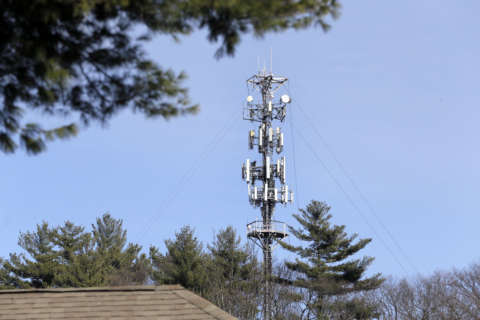WASHINGTON — Most people want their mobile devices to work faster, but dozens of Maryland residents in Montgomery County have voiced concerns about proposed zoning changes that would allow more small cell towers in their neighborhoods.
As wireless technology changes, the county says it has received an unprecedented number of applications to install small cell antennas in residential neighborhoods and commercial areas.
In many cases the antennas would be mounted on street lights and shorter buildings.
For years, residents have expressed concerns about possible health risks from radio frequency emissions — many voiced their apprehension at a public meeting Monday evening, at the Montgomery County Council Office Building.
Maryland county and state lawmakers, including County Executive Isiah “Ike” Leggett, have been asking the Federal Communications Commission to complete its 2013 review of radio frequency standards that were established in 1996.
“The RF standards need to be updated,” outside counsel Gerard Lederer told attendees. “I can understand every bit of frustration that might be expressed on RF tonight.”
The county is subject to federal regulation on access to cell service, said Mitsuko Herrera, director of economic development initiative Ultra Montgomery.
“Under federal law, the county may not deny (provider access) or create zoning regulations, on the basis of concerns about the health effects of RF emissions,” said Herrera. “We can enforce the rules the FCC creates, but we cannot create our own rules.”
The county is working to balance that federal mandate with local concerns, including making sure the towers and antennas are compatible with neighborhoods, she said.
Some in the audience expressed concern that under proposed regulations, in some cases towers could be located within 20 feet of bedroom windows, and many doubted people would be as safe as cell providers claim.
“When the class action lawsuits start coming in, for the birth defects, or the learning disabilities or the cognitive problems, because children are going to be sleeping near these towers, where we don’t have studies that really show whether it’s safe or not, how is that risk going to be managed,” asked parent Kerry Cunningham.
Herrera said providers would be liable in such cases.
See a map of current and proposed locations for the antennas in Montgomery County.








